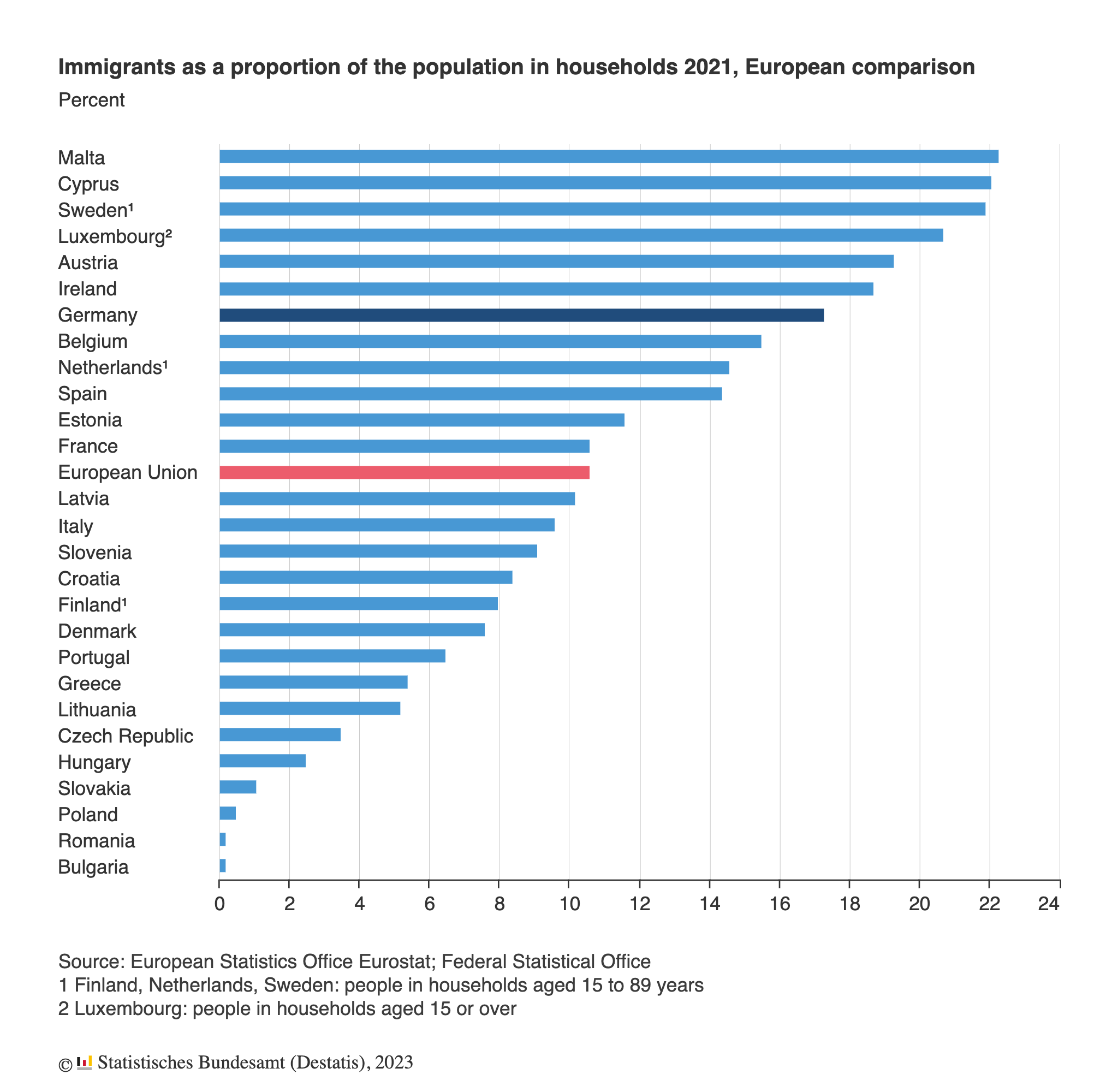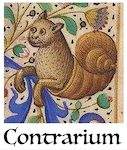23% of people in Germany and 21% in Sweden are of “migrant background”
According to a recent publication by Germany’s Federal Statistics Office (Statistisches Bundesamt) picked up by the Associated Press, 23% of the people in Germany are immigrants or children of immigrants. 17.3% or 14.1 million are themselves immigrants who have been coming since the 1950s, and another 4.7 million people (or 5.7%) are direct descendants of immigrants. That is, people who were born in Germany but both of their parents had immigrated to Germany. Then you have a further 3.7 million people (4.5%) who were born in Germany and have one parent who is an immigrant and another who is German. Therefore, only 72.5% of the people are “fully native German”. And this is not counting the recent wave of Ukrainian refugees, which may account for another 2 million people.
The numbers, if true, are really bewildering, considering that the country was 90% or more ethnic German until not long ago. (I say “if true” because they are based on a “microcensus” which is basically a survey of 1% of the population, and not a full census).
What is the source of such foreign migrants?
Well, initially most of them were Turks, who started coming in the 1960s as “guest workers” and never left. They still account for the largest number of “people with migrant background”. Then you have the Poles and Romanians who started coming after the fall of the Iron Curtain in 1990.
Truth be told, there is also a large contingent of ethnic Germans who were living in the Soviet Union, Poland or other Eastern European countries and came back after 1990, the so-called Aussiedler. But it is not clear to me if such people are considered “migrants” in those statistics or not, as they had a “right of return”. Yet, despite being ethnic Germans, many of them did not speak German and had problems integrating.
In 2015 and 2016 there was that well-known stampede of refugees from Syria, and Merkel opened the doors for them, so that Syrians jumped to third place, behind Turks and Poles. But now perhaps they have been surpassed by the Ukrainians, who will soon account for 1% or 2% of the total population in the country.
It’s not just Germany, of course. Sweden has 21.9% of migrants, and its case is perhaps worse, as it is a small country with a small population — meaning that their permanent replacement can happen quicker. The same is true of Ireland, with 18.7%.

Such numbers, together with the extremely low birth rates in most of the West, are very worrying for the future prospects of Europe.
Now, being myself an immigrant and descendant of immigrants, I am not a radical immigration restrictionist nor a foaming-at-the-mouth nationalist, but I do believe that people are important. What forms a nation and gives it unity? Not ideas or a constitution, as many believe now, but essentially, people. People, ideally of the same blood, language, culture and religion. Sure, some foreign migrants can be integrated, and in some ways always were — but the massive numbers that we have seen now, and continue seeing, is something unprecedented and probably unsustainable. At least, for Europe — the American continent is a slightly different story.
Besides, to me, at least, what was interesting about Europe was its diversity — a true diversity, with each country with its different food, language and talents: Germans in philosophy, Italians in art, French in literature, etc. But now, in the name of a fake “diversity”, all countries are starting to look more or less the same: full of big cities with ugly modern buildings, a multicultural population, an Americanized (or globalized) culture and a MacDonald’s and a Starbucks in every corner.
How will Europe look in a 100 years? (If there is still a European continent, or a planet Earth, by then). Well, I’m probably not going to be here to find out, but I hope and wish that most of its countries may still exist in some form or another. However, the borders of the European nations changed quite a lot in the last 1000 years, so I won’t be surprised if they further change in the next 100 too.

You remark that fake diversity is the cover story behind massive immigration. But why does Europe or the US need more diversity, fake or real? What’s wrong w/ a mono-cultural nation like Japan or Nigeria? No one’s calling for their demographic change. No one’s saying they need more inclusiveness. Not yet anyway.
To me a more pertinent question is who is promoting this relatively new multicultural agenda? You seem to be saying Americans and American corporations are behind the demographic changes in Europe. Do you really believe that? I don’t.
This lady knows exactly who’s behind the runaway train that’s going to destroy western societies. https://www.youtube.com/watch?v=G45WthPTo24 Is she just a crack pot? I think she’s just one of many of her tribe who want to fix the world according to their ancient principles.